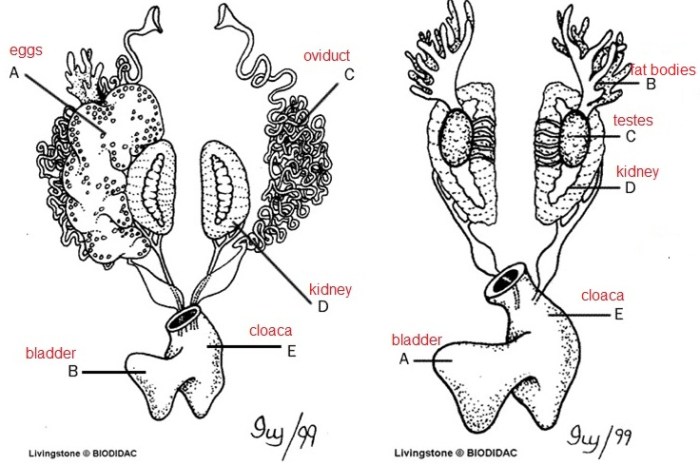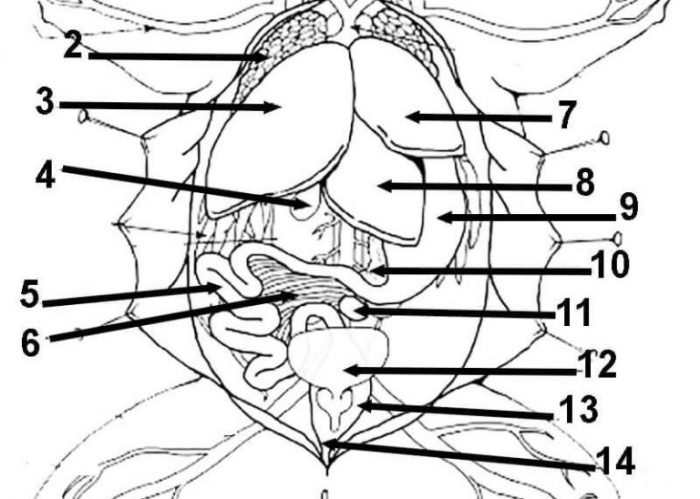Frog anatomy review labeling answers provide a comprehensive understanding of the intricate inner workings of these fascinating amphibians. This detailed guide delves into the structural components and physiological processes that define frog biology, empowering students, researchers, and nature enthusiasts alike with a profound knowledge of these remarkable creatures.
From the skeletal system to the reproductive organs, every aspect of frog anatomy is meticulously examined, offering a holistic perspective on the unique adaptations and evolutionary history of frogs. With precise labeling and informative descriptions, this resource serves as an invaluable tool for grasping the complexity and beauty of frog biology.
Frog Anatomy Overview

Frogs are amphibians that exhibit a unique and complex anatomy, adapted to their semi-aquatic lifestyle. Understanding the internal and external structures of frogs is crucial for comprehending their biology and ecology.
Externally, frogs possess a smooth, moist skin, with the absence of scales or feathers. Their bodies are divided into the head, trunk, and limbs. The head features a pair of large, protruding eyes, nostrils, and a wide mouth. The trunk contains the internal organs, while the limbs are adapted for swimming, jumping, and climbing.
Internally, frogs have a highly developed organ system, including a digestive system, respiratory system, circulatory system, nervous system, and reproductive system. The digestive system consists of a mouth, esophagus, stomach, small intestine, large intestine, and cloaca. The respiratory system includes lungs and a skin that facilitates gas exchange.
The circulatory system comprises a heart, blood vessels, and blood, which transport oxygen and nutrients throughout the body.
The nervous system of frogs is composed of a brain, spinal cord, and nerves. The brain is responsible for coordinating and controlling the body’s functions. The reproductive system varies between male and female frogs, with males possessing testes and females having ovaries.
Skeletal System, Frog anatomy review labeling answers
The skeletal system of frogs provides support, protection, and mobility. It consists of bones, cartilage, and ligaments.
| Bone Name | Bone Type | Location | Function |
|---|---|---|---|
| Cranium | Flat bone | Head | Protects the brain |
| Vertebrae | Irregular bone | Backbone | Supports the body and protects the spinal cord |
| Femur | Long bone | Thigh | Supports the body and enables jumping |
| Tibia and Fibula | Long bones | Lower leg | Supports the body and enables jumping |
Muscular System
The muscular system of frogs is responsible for movement and locomotion. It consists of muscles attached to the skeletal system.
The major muscle groups include:
- Pectoralis muscles:Located on the chest, these muscles are responsible for lifting the forelimbs.
- Biceps and triceps muscles:Located on the upper arm, these muscles control the flexion and extension of the elbow joint.
- Quadriceps and hamstring muscles:Located on the thigh, these muscles control the flexion and extension of the knee joint.
- Gastrocnemius and soleus muscles:Located on the calf, these muscles control the plantar flexion of the foot.
Quick FAQs: Frog Anatomy Review Labeling Answers
What is the function of the frog’s cloaca?
The cloaca serves as a multifunctional opening that facilitates the elimination of waste products, including urine and feces, as well as the release of reproductive cells during mating.
How does the frog’s respiratory system differ from that of humans?
Unlike humans, frogs possess cutaneous respiration, which allows them to absorb oxygen through their moist skin. This adaptation is particularly advantageous in aquatic environments or during hibernation.
What is the role of the frog’s liver in digestion?
The liver plays a crucial role in detoxifying the blood, producing bile to aid in fat digestion, and storing energy in the form of glycogen.


